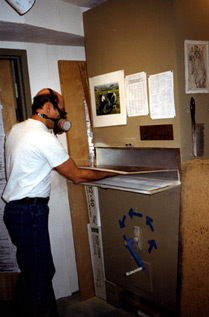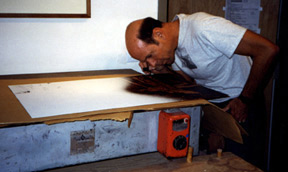The Process For Creating Aquatint Etchings
PREPARING THE PLATE
Aquatint etching is a technique that produces a full tonal range and rich texture in etchings. To create an aquatint, rosin dust is dropped onto a copper plate and then the rosin is melted onto the plate. This produces a matrix of small acid resistant dots across the surface of the plate.
AQUATINT CLASS:
Single rosining aquatint: Petaluma Oaks
Multiple rosining aquatint: Shadows
Creep-etch: Skagit
Multiple-plate aquatint: Evening Reflections

